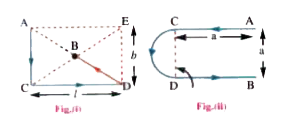Text Solution
Verified by Experts
|
Topper's Solved these Questions
MOTION IN A STRAIGHT LINE
AAKASH SERIES|Exercise Numerical exercise(LEVEL-1)|22 VideosView PlaylistMOTION IN A STRAIGHT LINE
AAKASH SERIES|Exercise Numerical exercise(LEVEL-2)|26 VideosView PlaylistMOTION IN A STRAIGHT LINE
AAKASH SERIES|Exercise PRACTICE EXERCISE|58 VideosView PlaylistMOTION IN A PLANE
AAKASH SERIES|Exercise QUESTION FOR DESCRIPTIVE ANSWER|7 VideosView PlaylistMOVING CHARGES AND MAGNETISM
AAKASH SERIES|Exercise EXERCISE-III|45 VideosView Playlist
Similar Questions
Explore conceptually related problems
Knowledge Check
A
B
C
D
Submit
A
B
C
D
Submit
A
B
C
D
Submit
Similar Questions
Explore conceptually related problems
AAKASH SERIES-MOTION IN A STRAIGHT LINE -problems
- Find the covered by the particles,in the following figures,(i) and (ii...
Text Solution
|
Playing Now - A particle travels from point A to B on a circular path of radius 15/p...
04:06
|
Play - A bus between Vijayawada and Hyderabad passed the 100 km,160-km and 22...
04:01
|
Play - The distance travelled by a particle in time t is given by s=(2.5)t^(2...
03:10
|
Play - A man walks at a speed of 6 km/hr for 1 km and 8 km/h for the next 1km...
02:34
|
Play - A motor vehicle travelled the first 1/3 of a distance s lit a speed of...
Text Solution
|
Play - A car covers 60 km at a uniform speed of 120 kmph and the text 60 km a...
02:18
|
Play - A motorist drives north for 35.0 minutes at 85 km/h and then stops for...
04:22
|
Play - Two cyclists,moving with equal speeds of 10 km/hr,are approaching each...
03:04
|
Play - A body moving in a curved path possesses a velocity 3 m/s towards nort...
04:08
|
Play - Velocity of a particle moving in a straight line varies with its displ...
01:56
|
Play - The radius vector of a particle varies with time t as vecr=vecbt(1-alp...
02:37
|
Play - A point moves the plane xy according to the law x=K sin wt and y=K(1-c...
03:31
|
Play - A car moving on a traight road accelerates from a speed of 4.1 m/s to ...
01:57
|
Play - A bullet moving with a speed of 150ms^-1 strikes a tree and penetrates...
03:13
|
Play - Two cars started simultaneously towards each other from towns A and B ...
04:38
|
Play - A body ,starting from rest and moving with constant acceleration,cover...
02:38
|
Play - In a car race, car A takes time t less than car B and passes the finis...
05:39
|
Play - Show that when a particle with uniform acceleration, the distances des...
09:37
|
Play - A car accelerates from rest at a constant rate alpha for sometime afte...
06:13
|
Play
